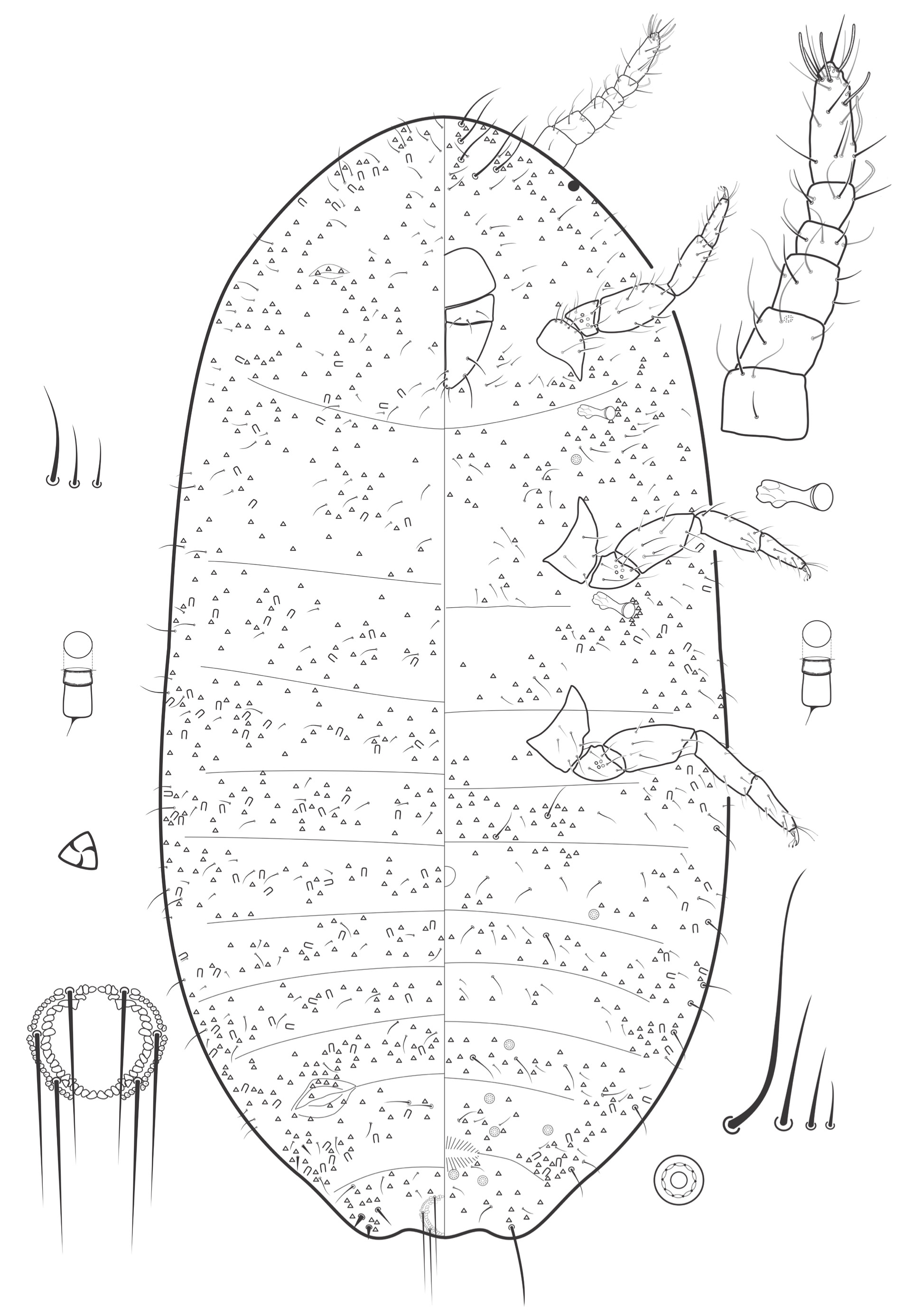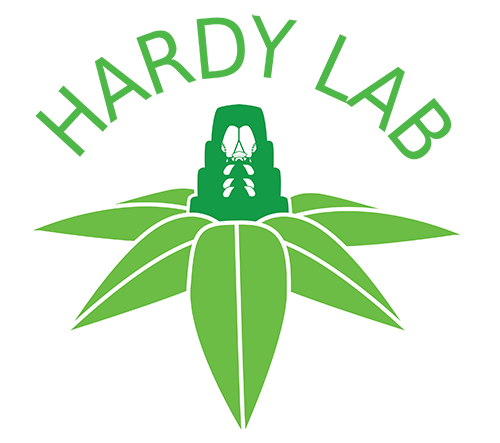Valid Names Results
Trionymus icelandensis Gerő & Szita, 2025 (Pseudococcidae: Trionymus)Nomenclatural History
- Trionymus icelandensis Gerő & Szita 2025: 121. Type data: ICELAND: Vík í Mýrdal, on Festuca vivipara, 09/15/2022, leg. K. Gerő, det. É. Szita.. Holotype, female, by original designation Type depository: Garðabær,: Natural Science Institute of Iceland, Iceland; accepted valid name Notes: Paratype: Vík í Mýrdal, on Poa pratensis, 09/16/2022, leg. K. Gerő, det. É. Szita (NSII) Illustr.
Common Names
Ecological Associates
Hosts:
Families: 1 | Genera: 2
- Poaceae
- Festuca vivipara | GeroAlSz2025
- Poa pratensis | GeroAlSz2025
Geographic Distribution
Countries: 1
- Iceland | GeroAlSz2025
Keys
- GeroAlSz2025: pp.125 ( Adult (F) ) [Trionymus species found in Iceland]
Remarks
- Systematics: Trionymus icelandensis resembles T. artemisiarum (Borchsenius, 1949) in having two pairs of cerarii, lacking multilocular pores on dorsum, and in having 6-segmented antennae; however, it differs as follows (character states of T. artemisiarum are given in brackets): (i) having one circulus (circulus absent); (ii) oral collar tubular ducts of one size (two sizes); and (iii) hind coxa without translucent pores (translucent pores present). (Gerő et al. 2025) T. icelandensis also resembles T. massiliensis and T. thulensis; see Gerő et al. for diagnoses.
- Structure: Unmounted adult female. Body elongate oval, light yellow, covered with fine powdery wax. Slide-mounted adult female. 1.68–1.69 mm long, 0.83–0.86 mm wide. Eyes marginal, each 24–26 μm wide. Antennae each 6 segmented, 258–264 μm long in total. Trionymus icelandensis Gerő & Szita can be recognised by possessing the following combination of features: (i) antennae each six segmented; (ii) eyes present; (iii) legs well developed, without translucent pores; (iv) one small circulus; (v) oral collar tubular ducts of one size present on both surfaces; (vi) multilocular disc-pores few, present on venter only, on abdominal segments III–VIII and occasionally on thoracic segment II; and (vii) body setae flagellate, in 3 sizes on dorsum, and in 4 sizes on venter, longest ones on venter of head. (Gerő et al. 2025)
- General Remarks: Description and illustration by Gerő et al (2025).
Illustrations
Citations
- GeroAlSz2025: description, diagnosis, distribution, host, illustration, key, list, 121, 124-125



